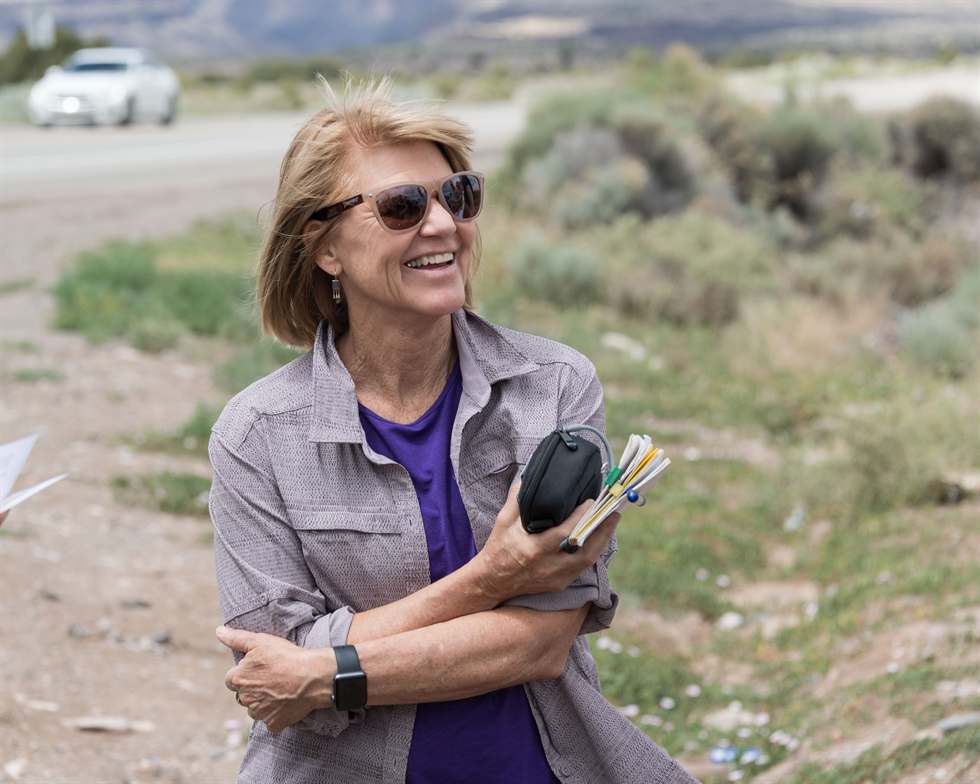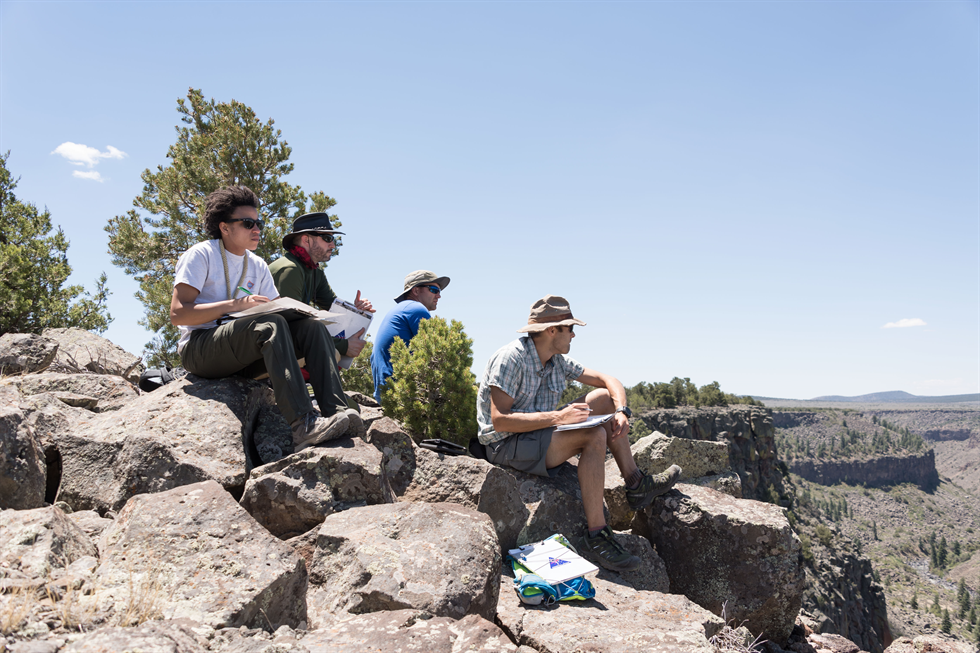Space rocks
2018-08-20
Since the start of the Apollo era, geoscience has been an integral part of astronaut training as the crews prepared for surface exploration and Earth observation. This summer, NASA’s newest astronaut candidates began their geoscience training as they prepare for missions further into the solar system than ever before.
The Astromaterials Research and Explorations Science (ARES) Division within the Exploration Integration and Science Directorate at NASA’s Johnson Space Center is responsible for the geoscience training that prepares crewmembers for Earth observations and planetary exploration. The training includes interpreting Earth photography and other remote sensing data, learning geology fundamentals and constructing geologic maps.
“Essentially, we are teaching a Geology 101 class,” said Cindy Evans, ARES division chief and one of the geoscience crew instructors. “Astronauts need to understand how Earth functions as a planet in order to observe our world from space and prepare to explore other bodies in our solar system.”

Cindy Evans, ARES division chief and geoscience training instructor, pictured in the Rio Grande del Norte National Monument. Credit: NASA/Norah Moran
In June, the 2017 astronaut candidates completed two weeks of geoscience training that integrated classroom studies with outdoor exploration. The program, which pulls from some of the original Apollo training lessons, had some familiar faces as Apollo 17 Lunar Module Pilot and geologist Harrison (Jack) Schmitt and Apollo Flight Director Gerry Griffin spoke to the candidates about preparing for surface exploration as NASA sets sight on the Moon and Mars.
“Schmitt and Griffin deliver a powerful message because they share their insight about the preparations, the training and the teamwork of Apollo that resulted in the successful exploration of the Moon.” Evans said. “The astronauts are really responsive to them and you can see their faces light up when they talk about the Moon.”
After completing a week of classroom training with geologists from NASA and American and Canadian universities, the candidates spent a week camping at the Rio Grande del Norte National Monument in northern New Mexico, where they worked in small teams to create detailed geological maps of the area. The field training builds a foundation to explore the Moon and Mars on future space missions, which would allow geologists on Earth to develop a greater understanding of the geology and planetary evolution on each of those bodies.

Astronaut candidates worked in small teams to create a detailed map of the area. Credit: NASA/Norah Moran
The candidates also develop leadership skills within their small teams that are vital to planetary exploration. Each member has an opportunity to work in different roles that help them prepare for the teamwork required on future space missions.
The astronaut candidates will continue their geoscience training in 2019 when they complete a second two-week training with ARES, including a field training in Flagstaff, Arizona, to simulate planetary exploration.
Noah Michelsohn
NASA Johnson Space Center
The Astromaterials Research and Explorations Science (ARES) Division within the Exploration Integration and Science Directorate at NASA’s Johnson Space Center is responsible for the geoscience training that prepares crewmembers for Earth observations and planetary exploration. The training includes interpreting Earth photography and other remote sensing data, learning geology fundamentals and constructing geologic maps.
“Essentially, we are teaching a Geology 101 class,” said Cindy Evans, ARES division chief and one of the geoscience crew instructors. “Astronauts need to understand how Earth functions as a planet in order to observe our world from space and prepare to explore other bodies in our solar system.”

Cindy Evans, ARES division chief and geoscience training instructor, pictured in the Rio Grande del Norte National Monument. Credit: NASA/Norah Moran
In June, the 2017 astronaut candidates completed two weeks of geoscience training that integrated classroom studies with outdoor exploration. The program, which pulls from some of the original Apollo training lessons, had some familiar faces as Apollo 17 Lunar Module Pilot and geologist Harrison (Jack) Schmitt and Apollo Flight Director Gerry Griffin spoke to the candidates about preparing for surface exploration as NASA sets sight on the Moon and Mars.
“Schmitt and Griffin deliver a powerful message because they share their insight about the preparations, the training and the teamwork of Apollo that resulted in the successful exploration of the Moon.” Evans said. “The astronauts are really responsive to them and you can see their faces light up when they talk about the Moon.”
After completing a week of classroom training with geologists from NASA and American and Canadian universities, the candidates spent a week camping at the Rio Grande del Norte National Monument in northern New Mexico, where they worked in small teams to create detailed geological maps of the area. The field training builds a foundation to explore the Moon and Mars on future space missions, which would allow geologists on Earth to develop a greater understanding of the geology and planetary evolution on each of those bodies.

Astronaut candidates worked in small teams to create a detailed map of the area. Credit: NASA/Norah Moran
The candidates also develop leadership skills within their small teams that are vital to planetary exploration. Each member has an opportunity to work in different roles that help them prepare for the teamwork required on future space missions.
The astronaut candidates will continue their geoscience training in 2019 when they complete a second two-week training with ARES, including a field training in Flagstaff, Arizona, to simulate planetary exploration.
Noah Michelsohn
NASA Johnson Space Center

Astronaut Candidate Jasmin Moghbeli examines the mineralogy of a rock sample using a hand lens.
Credit: NASA/Norah Moran

Barb Tewksbury, geologist from Hamilton College, works with Astronaut Candidates Jonny Kim (left, with hand lens) and Raja Chari (right) to interpret the geology of the field area.
Credit: NASA/Norah Moran

Astronaut Candidate William Hoburg using tools to conduct geoscience that are similar to tools that could potentially be used in a future planetary expedition.
Credit: NASA/Norah Moran

Astronaut Candidate Robb Kulin studies the composition of a rock using a hand lens. GSFC geologist Jake Bleacher provides guidance.
Credit: NASA/Norah Moran







